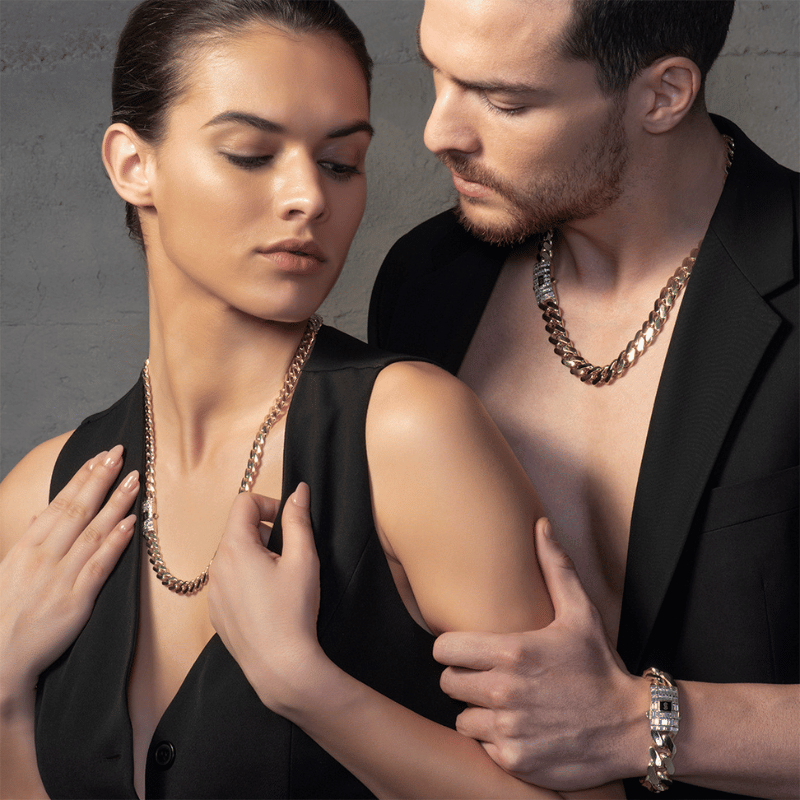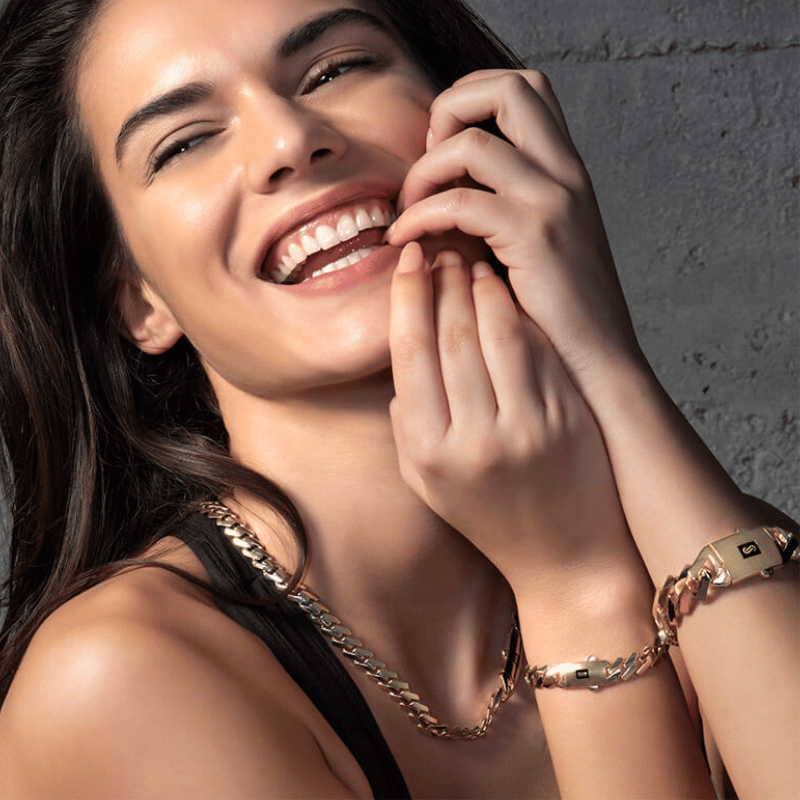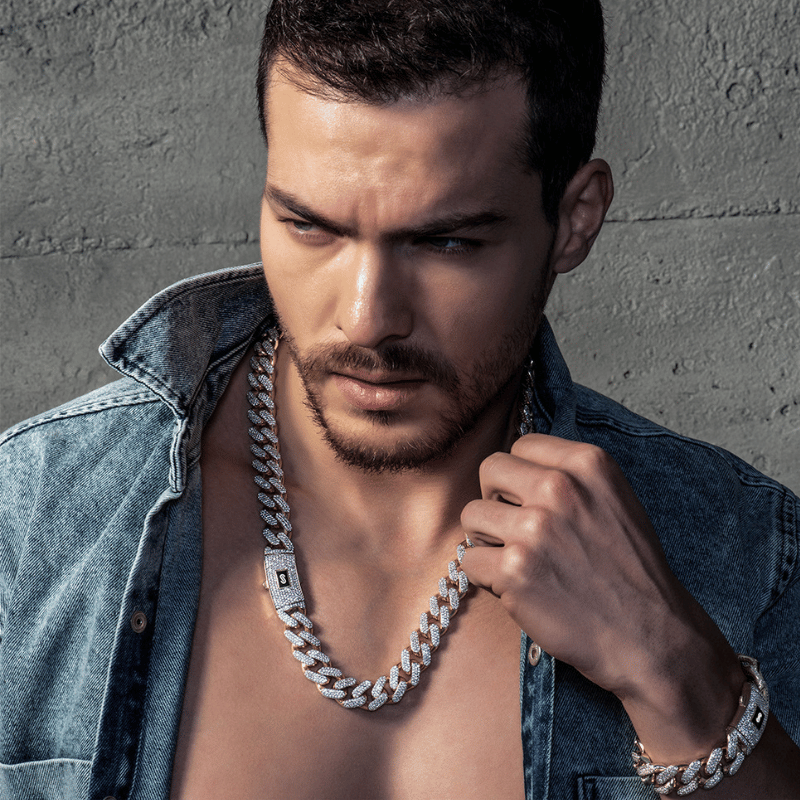
Eras and Jewelry Styles
If you’re looking to get a crash course on the key features of jewelry styles throughout history, you’ve come to the right place! Dive in to discover how you can tell apart pieces from different eras so you can show off your knowledge like a pro.
Jewelry Styles Throughout History
It’s no secret that people have been adorning themselves with jewels for centuries. Some of the earliest surviving examples of personal adornments are Sumerian jewelry made of copper, gold, and silver, which date back to the 3rd millennium BC. Other popular jewelry styles throughout history include Renaissance jewelry from the 14th to 17th centuries, which combined metals like gold with gemstones and pearls as well as colored enamels, and later Georgian jewelry from the early 18th to mid-19th centuries, which incorporated gemstones like pearls, sapphires, rubies, garnets, and diamonds. Emerging toward the end of the Georgian era, Regency era jewelry—most recently popularized in the show Bridgerton—saw the masses begin to experiment with personal ornamentation, with florals and symbols such as the ouroboros accompanying precious gems on necklaces, headpieces, and more.
Although very few examples of Georgian or Regency-era jewelry can be found for sale today (as most of them are housed in museums), avid vintage shoppers can sometimes find Victorian era jewelry, which dates from 1837 to 1901 and encompasses a rather wide range of styles, from Renaissance-inspired motifs reflecting the natural world to simpler mourning jewelry popularized after the death of Prince Albert. From 1901 to 1915, Edwardian jewelry briefly dominated the scene, marking more intricate and flowery designs thanks to advanced techniques such as openwork filigree.
Named after one of the most popular art movements in the 20th century, Art Deco jewelry was prevalent from around 1920 to 1945. Although frequently confused with Art Nouveau jewelry, Art Deco jewelry vintage pieces stand out with their sharp angles, geometric patterns, and abstract designs, as compared to the nature-inspired, free-flowing lines of Art Nouveau.
How to Make the Most of Your Vintage Pieces?
Today, jewelry is considered to be a form of self-expression for people of all genders, ages, and backgrounds. As such, you can find vintage or vintage-inspired pieces that borrow from historical eras in jewelry as well as hyper-modern lines—and even designs that combine a little bit of both!
No matter what type of vintage jewelry you prefer, it’s important to find pieces that truly reflect your personal style for a chic look. Another important factor is how well you take care of your vintage pieces—if you use the right tools and techniques, these investment pieces will have you looking like a million bucks for years to come!
If you’re ready to buy some heirloom pieces for your collection, look no further than Monaco ChainTM’s vintage-inspired timeless designs.

How to identify the era of jewelry?
There are several indicators of when a piece of jewelry was made. The first sign to look out for is a jewelry stamp or a marking—usually found on the inside of rings, or near the clasp of necklaces and bracelets—which indicates when and where the jewelry was produced. Another way to identify the jewelry era is by material and style: does it have gemstones that are emblematic of a certain period? Does the jewelry have geometric or free-flowing lines? Paying attention to these types of details can help you narrow down the era for your pieces.
How to make Victorian era jewelry?
Victorian era jewelry—particularly Victorian era necklaces—is best known for using a wide variety of gemstones, from agate, amber, and amethyst to diamond, emerald, garnet, quartz, topaz, turquoise, and more. Rings and brooches also often included precious gems overlaid on gold.
How was jewelry enameled during the Elizabethan era?
During the Elizabethan era from the mid-16th to early 17th centuries, jewelry—especially gold pieces—was enameled using colored glass.
What era is 1940s jewelry?
1940s jewelry encompasses a range of styles, from ornate Art Deco bracelets and Art Deco necklaces to more retro pieces made out of less precious gems and metals during the war period.
What era is 1950s jewelry?
In many ways, the 1950s marked a return to the finer things in life after the war period—and that included jewelry. The style was more ostentatious and glamorous as compared to the 1940s, with the angular lines of 1920s Art Deco jewelry coming back into fashion and reinterpreted through multi-strand necklaces as well as faux pearls.
Are Edwardian and Victorian the same?
Although the Edwardian era lasted much shorter than the Victorian era, it left its mark on the history of jewelry, as it vastly differed from Victorian jewelry in style—thanks to advances in jewelry-making at the time, Edwardian jewelry is much more ornate and detailed in construction than Victorian jewelry.
What are Georgian crystals?
Named after the Georgian period from 1714 to 1837—during the reigns of George I, II, III, and IV—Georgian crystals (aka Georgian paste) are a type of hand-cut glass polished with metal powder to sparkle like precious gems. The most common types of Georgian crystal cuts are rose cut, old mine cut, and table cut.
What style is Art Nouveau?
Lasting from 1890 to 1910, the Art Nouveau period overlaps with the Edwardian era. Both styles are known for their emphasis on ornamentation, but whereas Edwardian era jewels are more symmetrical in shape, Art Nouveau jewelry is much more free-form, taking its cues from nature.
What colors are used in art nouveau?
As an artistic movement that celebrated nature above all else, Art Nouveau featured a great deal of muted nature tones—think browns and mustards paired with a wide variety of greens from olive to sage to emerald.
What is retro era jewelry?
Overlapping somewhat with the Art Deco period, Retro era jewelry encompasses the eye-catching jewelry popular from 1939 to 1950—featuring plenty of gold with pavé diamonds and a revival of intricate Edwardian motifs. Some of the most enduring designs from this era include brooches with movable elements as well as bombé rings.
Were there chokers in the 80s?
One of the most popular jewelry styles of the 70s, chokers were a hit during the 80s, as well. The chunky styles of the previous decade were upgraded with pearls and pendants in the 80s, before the arrival of tattoo chokers in the 90s.
What kind of jewelry is trending now?
With so many brands and jewelry styles available today, it’s easy to find both vintage and modern pieces to suit any style. In addition to timeless designs featuring metals like gold, silver, and platinum, you can also go for over-the-top maximalist pieces with all sorts of gemstones, opt for playful charm necklaces and bracelets, or try out the uber-popular Greek evil eye necklace. Truly adventurous wearers can even combine vintage and modern styles for an eclectic look.
What is modern contemporary jewelry?
Modern contemporary jewelry is not a single style but rather a general name for styles that are currently popular—sometimes all at once! That means modern contemporary jewelry can include a wide range of styles, from a modern interpretation of an Art Deco diamond bracelet to a chunky gold chain. Usually, modern pieces tend to feature less ornamentation than their vintage counterparts, but it is also possible to find extremely detailed and handcrafted pieces produced nowadays.


